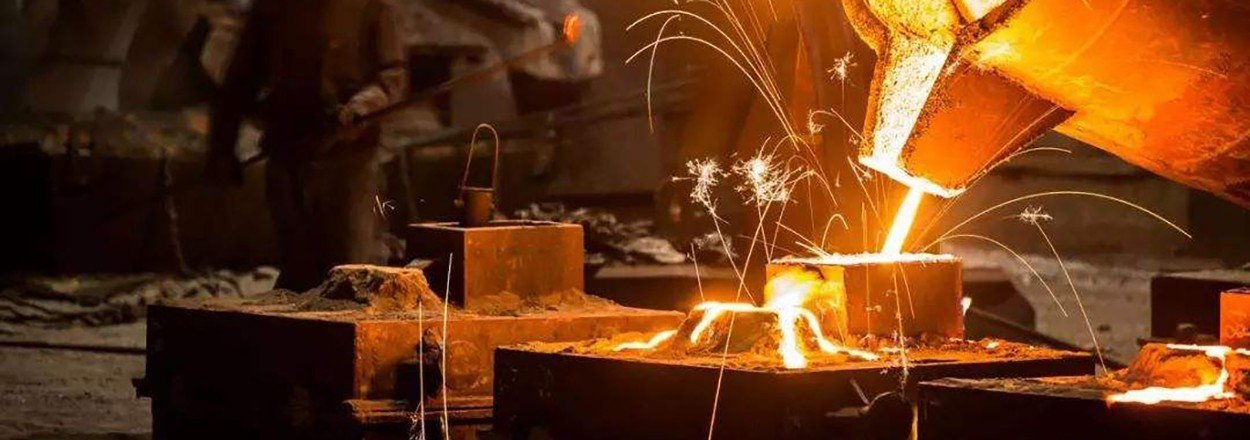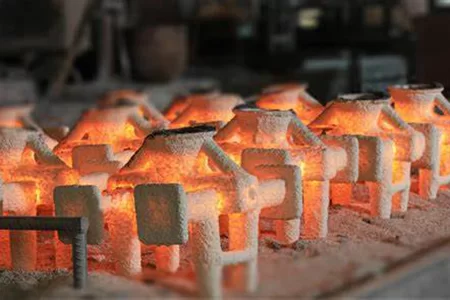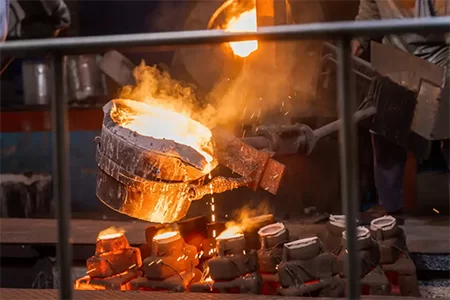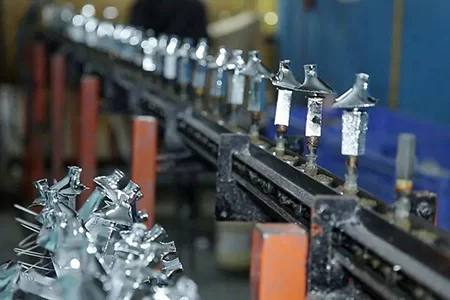
How to Select The Right Raw Materials for Casting Foundries?
-
Home>
-
Blog>
-
Technology>
How to Select The Right Raw Materials for Casting Foundries?
In the world of foundry operations, the selection of raw materials is a decision that can make or break the quality of the final product. Foundries are responsible for transforming raw materials into a wide range of metal products, from intricate automotive parts to massive industrial machinery components. The right choice of raw materials is essential for ensuring the mechanical properties, dimensional accuracy, and overall performance of the castings. In this blog post, we will explore the key considerations that foundries must take into account when choosing raw materials.
Factors to Consider When Choosing Raw Materials for Foundries
Understanding the End - Product Requirements
The first and foremost step in choosing raw materials for a foundry is to have a clear understanding of the end - product requirements. Different applications demand different properties from the cast metal. For example, if the end - product is a component for an aircraft engine, it needs to have high strength - to - weight ratio, excellent heat resistance, and fatigue resistance. On the other hand, a casting for a decorative item may prioritize aesthetic qualities such as surface finish and the ability to take on detailed designs.
Chemical Composition
The chemical composition of raw materials is of paramount importance in determining their suitability for casting. Different metals and alloys have distinct chemical compositions, each with its own unique set of properties. For example, carbon steel, which contains varying amounts of carbon, is known for its strength and hardness, making it a popular choice for structural applications. Stainless steel, on the other hand, contains chromium and other alloying elements that provide excellent corrosion resistance, making it ideal for use in harsh environments.

When evaluating the chemical composition of raw materials, foundries need to take into account the requirements of the specific casting application. Factors such as the desired mechanical properties, the operating conditions of the finished product, and any industry standards or regulations must be carefully considered. Additionally, the presence of impurities in the raw materials can have a significant impact on the quality of the castings. Therefore, it is essential to ensure that the raw materials meet the required purity levels.
Mechanical Properties
The mechanical properties of raw materials, such as strength, ductility, hardness, and toughness, are crucial considerations in the selection process. These properties determine how the material will perform under different loading conditions and during the casting process itself. For example, high-strength materials may be required for components that are subject to significant mechanical stresses, while materials with good ductility may be preferred for applications where the casting needs to undergo forming or machining operations.

Foundries often rely on standardized material specifications and testing methods to evaluate the mechanical properties of raw materials. These specifications provide a common framework for comparing different materials and ensure that the chosen materials meet the required performance criteria. Testing methods such as tensile testing, hardness testing, and impact testing are commonly used to assess the mechanical properties of raw materials.
Melting and Casting Characteristics
The melting and casting characteristics of raw materials are also important factors to consider. Different metals and alloys have different melting points, viscosities, and fluidity, which can affect the filling of the mold cavity and the formation of defects during the casting process. For example, metals with low melting points and high fluidity are generally easier to cast, as they can fill complex mold geometries more effectively. On the other hand, metals with high melting points and low fluidity may require specialized casting techniques or equipment to achieve good quality castings.
In addition to the melting and casting characteristics of the raw materials themselves, foundries also need to consider the effects of additives and modifiers. Additives such as deoxidizers, grain refiners, and inoculants can be added to the molten metal to improve its properties and performance during the casting process. For example, deoxidizers can remove oxygen from the molten metal, reducing the formation of oxides and improving the purity and quality of the casting.
Availability and Cost
The availability and cost of raw materials are practical considerations that cannot be ignored. Foundries need to ensure that they can source the required materials in a timely and cost-effective manner. This may involve evaluating different suppliers, considering the lead times for delivery, and assessing the stability of the supply chain. Additionally, the cost of raw materials can have a significant impact on the overall production costs of the casting. Therefore, foundries need to carefully balance the quality and performance requirements of the materials with their cost.

Common Types of Raw Materials Used in Foundries
Ferrous Metals
Ferrous metals, such as iron and steel, are widely used in casting due to their excellent mechanical properties and versatility. Carbon steel is a common choice for many casting applications, offering a good balance of strength, hardness, and toughness. Alloy steels, which contain additional alloying elements such as chromium, nickel, and molybdenum, are used in more demanding applications where superior performance is required. Stainless steels are known for their exceptional corrosion resistance and are commonly used in industries such as aerospace, automotive, and chemical processing.
Cast iron, another type of ferrous metal, is known for its excellent machinability, wear resistance, and thermal conductivity. It is commonly used in applications such as engine blocks, gears, and cookware. Gray cast iron, ductile iron, and malleable iron are different types of cast iron, each with its own unique set of properties and applications.
Non-Ferrous Metals
Non-ferrous metals, such as aluminum, copper, magnesium, and titanium, are also widely used in casting. Aluminum is a lightweight metal with excellent corrosion resistance and thermal conductivity, making it a popular choice for applications such as aerospace, automotive, and consumer goods. Copper and its alloys, such as brass and bronze, are known for their good electrical conductivity, corrosion resistance, and machinability. Magnesium is a lightweight metal with high strength-to-weight ratio, making it suitable for applications in the automotive and aerospace industries. Titanium is a high-strength, low-density metal with excellent corrosion resistance, which is used in aerospace, medical, and other high-performance applications.
Alloys
Alloys are mixtures of two or more metals or metals and non-metals, which are combined to improve the properties of the base materials. Alloys can be tailored to meet specific requirements, such as enhanced strength, corrosion resistance, or thermal conductivity. For example, aluminum-silicon alloys are used in casting applications where good casting properties and high wear resistance are required. Copper-nickel alloys are known for their excellent corrosion resistance in seawater and are used in marine applications.
Testing and Quality Control of Raw Materials
To ensure the quality and suitability of raw materials for casting, foundries rely on a variety of testing and quality control measures. Chemical analysis is a common method used to determine the composition of raw materials. This can be done using techniques such as spectroscopy, chromatography, and wet chemical analysis. Mechanical testing, such as tensile testing, hardness testing, and impact testing, is used to evaluate the mechanical properties of raw materials. Microstructure analysis, using techniques such as metallography and scanning electron microscopy, can provide insights into the microstructure of the materials and help identify any potential defects or impurities.
In addition to these traditional testing methods, advanced techniques such as non-destructive testing (NDT) and computer-aided materials design (CAMD) are also being used in foundries. NDT techniques, such as ultrasonic testing, magnetic particle testing, and radiographic testing, can be used to detect internal defects in raw materials without destroying the samples. CAMD techniques use computer simulations to predict the properties and performance of materials, allowing foundries to optimize their material selection and casting processes.
Environmental and Sustainability Considerations in Raw Material Selection
In recent years, environmental and sustainability concerns have become increasingly important in the manufacturing industry. Foundries are also expected to take these factors into account when selecting raw materials. The extraction and processing of raw materials can have a significant impact on the environment, including greenhouse gas emissions, water pollution, and waste generation. Therefore, foundries need to choose raw materials that have a lower environmental footprint and are produced using sustainable practices.
Recycling and reuse of raw materials are also important aspects of sustainability in foundries. Scrap metal can be recycled and remelted to produce new castings, reducing the need for virgin raw materials and conserving natural resources. Additionally, some foundries are exploring alternative raw materials, such as bio-based materials and recycled composites, which offer the potential for reduced environmental impact.
Conclusion
The selection of raw materials is a critical aspect of the casting process that demands careful consideration of multiple factors. Foundries must take into account the chemical composition, mechanical properties, melting and casting characteristics, availability, cost, and environmental sustainability of the raw materials. By understanding these factors and implementing appropriate testing and quality control measures, foundries can ensure that they choose the most suitable raw materials for their specific casting applications. This, in turn, will lead to high-quality castings with excellent mechanical properties, reduced waste, increased productivity, and a minimized environmental footprint. As the manufacturing industry continues to evolve and face new challenges, the importance of raw material selection in foundries will only continue to grow. By staying abreast of the latest developments and best practices in raw material selection, foundries can remain competitive and continue to produce world-class castings that meet the demands of various industries.
Article Navigation
Article Navigation
Industries
Foundries
-

March.03, 2025
Addressing Defects in Castings: A Comprehensive Guide
READ MORE
-

February.25, 2025
How to Compare Product Quality Between Different Casting Foundries?
READ MORE
-

February.14, 2025
What Are The Metal Casting Materials Commonly Used in Foundries?
READ MORE
-

January.20, 2025
Surface Treatments for Metals After Casting
READ MORE
-

November.18, 2024
What Should Casting Manufacturers Pay Attention to in Production Management?
READ MORE







